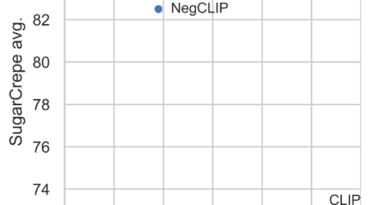Microsoft AI Proposes an Automated Pipeline that Utilizes GPT-4V(ision) to Generate Accurate Audio Description for Videos
In recent years, advancements in artificial intelligence (AI) have transformed various industries, including video content production and accessibility. One significant development in this field is the use of AI to generate accurate audio descriptions (AD) for videos, making them more accessible to individuals with visual impairments. Microsoft AI has proposed an automated pipeline that utilizes GPT-4V(ision), a large multimodal model, to generate accurate AD for videos. This innovative approach combines visual signals from video frames with textual context to create AD content that fits seamlessly into the video. In this article, we will dive deeper into the automated pipeline, explore the benefits of using GPT-4V for AD generation, and discuss the future potential of this technology.
The Importance of Audio Description (AD) for Video Accessibility
Video content has become an integral part of our lives, whether it’s entertainment, educational, or informational videos. However, individuals with visual impairments face significant challenges in accessing and understanding the visual elements of these videos. Audio Description (AD) is a powerful tool that bridges this accessibility gap by providing a spoken narrative of important visual elements in the video. AD enables individuals with visual impairments to experience and understand the content by providing a detailed description of actions, gestures, scene changes, and other visual cues.
Traditionally, creating AD for videos required specialized expertise, equipment, and a significant investment of time and resources. The process involved manually crafting descriptions and synchronizing them with the video content. Automating this process using AI technologies not only reduces the production time and cost but also enhances the accessibility of videos for individuals with visual impairments. Microsoft AI’s proposed automated pipeline aims to leverage the power of GPT-4V(ision) to generate accurate AD for videos.
Introducing GPT-4V(ision): A Multimodal Model for AD Generation
GPT-4V(ision) is a large multimodal model developed by OpenAI, which extends the capabilities of the GPT-4 language model by incorporating vision potential. This multimodal model integrates various data types, including text, image, audio, and video, to create a more reliable and intelligent AI system. By combining visual signals from video frames with textual context, GPT-4V enables the generation of accurate AD content that aligns seamlessly with the video’s temporal gaps.
Microsoft AI’s automated pipeline utilizes GPT-4V(ision) to generate AD content by analyzing a movie clip and its title information. This multimodal approach allows the system to understand the visual cues present in the video and generate descriptive text accordingly. The pipeline also takes into account the different temporal gaps within actor dialogue, ensuring that the generated sentences of the right size fit seamlessly into the video.
The Automated Pipeline Process
The automated pipeline proposed by Microsoft AI involves several steps to generate accurate AD for videos. Let’s explore each step in detail:
Step 1: Movie Clip Analysis and Title Information
The pipeline begins by analyzing a movie clip and extracting relevant visual and textual information. This analysis helps the system understand the context and identify key visual elements that require description.
Step 2: Multimodal Integration of Visual Signals and Textual Context
GPT-4V(ision) utilizes its multimodal capabilities to integrate the visual signals from video frames with the textual context extracted in the previous step. This integration ensures that the generated AD content accurately describes the visual elements in the video.
Step 3: Adjusting AD Size to Fit Speech Gaps
One of the challenges in automating AD generation is adjusting the size of the AD sentences to fit the speech gaps within the video. The proposed pipeline addresses this challenge by providing input to AD production guidelines, which specify how long each sentence should be in a simple and natural way.
Step 4: Testing and Evaluation
To measure the performance of the proposed pipeline, Microsoft AI tested it using the MAD dataset, which includes a rich collection of over 264,000 audio descriptions from 488 movies. The pipeline’s performance was evaluated based on various metrics such as CIDEr and ROUGE-L scores, which assess the quality of the generated AD content.

Advantages of Using GPT-4V for AD Generation
The utilization of GPT-4V(ision) in Microsoft AI’s automated pipeline offers several advantages for AD generation:
Multimodal Integration:
GPT-4V(ision) leverages its multimodal capabilities to integrate visual signals from video frames with textual context, resulting in accurate AD generation that aligns seamlessly with the video’s temporal gaps.
Enhanced Accessibility:
Automating the AD generation process using GPT-4V makes video content more accessible to individuals with visual impairments. By providing detailed descriptions of visual elements, AD enables these individuals to have a comprehensive understanding of the video content.
Time and Cost Efficiency:
The automated pipeline significantly reduces the time and resources required for AD production. By automating the process, video content creators can efficiently generate AD without the need for specialized expertise and equipment.
Improved Performance:
The performance evaluation of Microsoft AI’s pipeline demonstrates its effectiveness in generating accurate AD content. The pipeline outperforms previous methodologies such as AutoAD-II, establishing a new state-of-the-art performance with higher CIDEr and ROUGE-L scores.
Future Potential and Considerations
While the proposed automated pipeline shows promising results in AD generation, there are still areas for improvement and future research. One notable consideration is the lack of a mechanism to determine suitable moments within a film to insert AD and estimate the related word count for that AD. Customizing a lightweight language-rewriting model using available AD data could enhance the output from the GPT-4V(ision) model and improve the generated AD quality.
Additionally, ongoing advancements in AI and multimodal models hold great potential for further enhancing the accuracy and effectiveness of AD generation. Continued research and development in this field could lead to more sophisticated pipelines that address the challenges of AD production, resulting in even better accessibility for individuals with visual impairments.
In conclusion, Microsoft AI’s proposed automated pipeline that utilizes GPT-4V(ision) represents a significant advancement in AD generation for videos. By integrating visual signals from video frames with textual context, the pipeline generates accurate AD content that seamlessly aligns with the video’s temporal gaps. The use of GPT-4V offers advantages such as multimodal integration, enhanced accessibility, time and cost efficiency, and improved performance. While there is room for further improvements, this innovative approach paves the way for a more inclusive and accessible video content landscape.
Check out the Paper. All credit for this research goes to the researchers of this project. Also, don’t forget to follow us on LinkedIn. Do join our active AI community on Discord.
Explore 3600+ latest AI tools at AI Toolhouse 🚀.
If you like our work, you will love our Newsletter 📰






